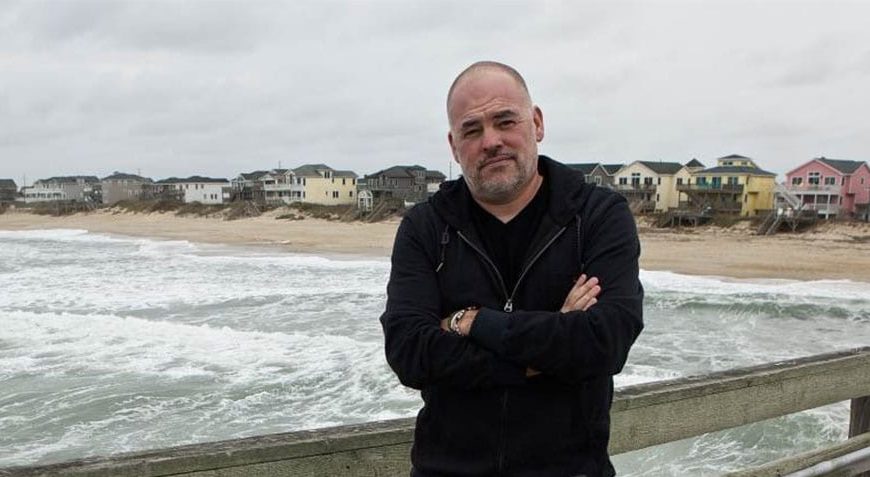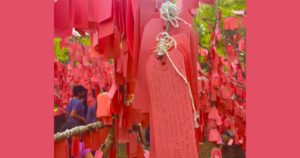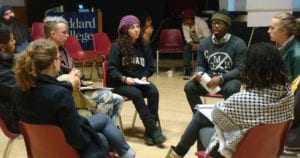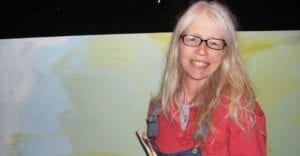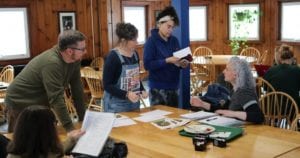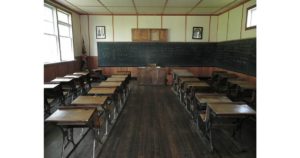
The whole thing about risks is that you don’t know whether the risk is a good one or a bad one until after you take the plunge. That’s why it’s a risk. Some risks are transparently bad from the get-go, like clicking on that link that offers a stay-at-home job earning $55K a month: all you’re likely to get is a malware bug. Some risks are transparently good, like starting an IRA account in your twenties. Others, a lot of others, seem good or bad ahead of time but you can never be 100 percent sure. Should I marry this person I love even though they hate every member of my family? Should I take a job in a faraway city or keep working in my hometown that I feel deeply connected to?
I’m thinking of a cluster of risks and revelations I faced when I was twenty-three going on twenty-four. I had dropped out of graduate school in Toronto, spent a miserable two years in Cambridge, Massachusetts making my first acquaintance with the American class system working as a peon in the Harvard Library, then pulled up stakes and returned to my parents’ house in San Diego to mull my next step. When nothing at all came to mind, I decided to visit some Berkeley classmates who’d been hired as lecturers at the University of Hawaii in Honolulu. Crafting little decoupaged art objects that I sold in hip bookstores made me enough money for the $300 roundtrip ticket and so I flew to Honolulu one rainy January day.
Now there’s not a lot of risk in taking a vacation. What’s important is that my first set of revelations came before the real risk and were the motivators f or the bold decision I then took. Sometimes revelations are what give us the courage to take a risk, not the other way around.
Revelation 1: The air. It embraced me the minute I stepped off the plane into the open-air Honolulu airport. I’d lived in Florida, I knew what sticky humid subtropical air felt like, but this was delicate, balmy air, carrying just a hint of moisture and buoyed by a gentle trade wind. Magic air.
Revelation 2: The water. The next morning, even though it was January and stormy, I jumped into the ocean at Waimanalo on the windward side of Oahu. I had never actually swum in the Gulf of Mexico when I was a child in Florida because the bayou where our boat was docked was so polluted you dared not even stick your toe in it. And the Pacific Ocean next to southern California where I spent my high school years is bone chillingly cold year round, thanks to the Pacific Current that runs down the coast of western North America. The Pacific Ocean that surrounds the Hawaiian islands is blood warm. It is life enhancing. It is magic.
Revelation 3: The wonderfully rich and funky diverse populations of the Islands—a blend of races, ethnicities, languages, customs, food, all amalgamated into the culture known simply as Local with a capital L. My images of Hawaii had been the stereotyped Hawaiian luau and hula girl. I had no idea about Chinese, Japanese, Filipino, Samoan, Micronesian, you name it, everybody intermarried with everybody else and all islanders amateur geneticists who could break down any combination just by looking at a face: right, one quarter haole, one quarter Hawaiian, one half Filipino.
The second day of my two-week vacation I cashed in my return ticket. In my mind that was no risk whatever. I was in love with the place. And as it happened, the two-week vacation lasted ten years. But that decision to stay precipitated a giant risk.
It was January, as I’ve said. One of the newly hired lecturers had contracted what is known as “Rock Fever” (a negative reaction, incomprehensible to me, to being on an island group 2000 miles from the nearest land mass). This person had bolted for the mainland and left his classes for the upcoming spring term without a teacher. I got up my courage and applied. They offered me the job. And here’s where the giant risk came in: Should I accept?
Why was it a risk to take this job? It was a risk because I had never taught a class in my life. I had been a reader at Toronto but never a teaching assistant, for a good reason. I was painfully shy. High school presentations had been absolute torture for me. Getting up in front of a class, not just once but every single day? Teaching? No, thank you.
But the $150 I had from cashing in my return ticket wasn’t going to last me very long. If I didn’t want to be passing plate lunch, two scoops rice, and soda through car windows at Chunky’s Drive In on King Street, Moili’ili, I needed to accept this offer.
I was hired on a Friday to start teaching on a Monday. Between that Friday and Monday stretched one of the worst weekends of my life. Mercifully I’ve forgotten the details of the minute-by-minute suffering I went through, but the overall feeling of dread has stayed with me to this day.
When Monday morning came, I walked down the corridor to my doom. Opened the classroom door and went in. Twenty-five expectant young faces looked up. I asked them to take out their data punch cards (relic from the dawn of the computing age). And they did it! They actually did it! Took out those damn cards, every last one of them, no questions asked.
My big, big revelation came the very next second. It didn’t matter how scared I was, how stupid, how badly prepared, how anything. I was the Teacher. And on the spot my stage fright vanished. In one crucial moment this burden of my young life went away for good.
If you don’t take a really really big risk, you never get a revelation like that.
But even though I wasn’t scared any more, I had an awful lot to learn about teaching. Looking back, I cringe at some of the things I did and din’t do. It was the middle of the Vietnam War. I was the same age as many of my students who had already endured devastating life experiences. When we read “A Modest Proposal”— the famous satirical essay by Jonathan Swift suggesting that the logical solution to the devastating Irish potato famine was to eat the babies—a young veteran raised his hand and recounted with a little laugh how the smell of cooking human flesh after a napalm attack automatically made your stomach growl. Another student had made the hippie pilgrimage to India only to have her husband die of hepatitis in the cave where they were camped the week they got there. Nothing in my own young experience matched theirs and I lacked the maturity to give them the guidance they needed—or to confront in more than token ways the handing off of a monocultural and colonial curriculum by a Mainland haole faculty to the most genetically and culturally diverse student population I’ve ever had since.
At some point you get to decide whether the risks you took in your life turned out to be good or bad. I definitely took the wrong risk by not starting my IRA in my twenties. As for Hawaii, the cost-benefit analysis boils down to one simple arc: from those Paul Gauguin decoupages I made to get there to My Time in Hawaii, the memoir I wrote when I came home. Good risk or bad? I think I know the answer.

